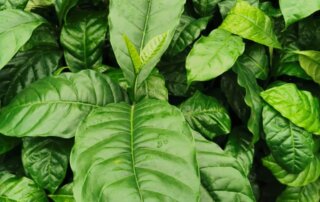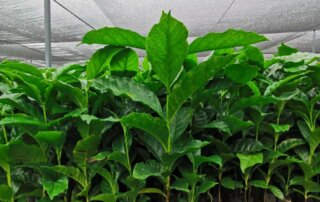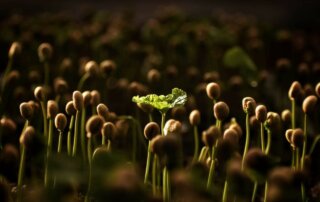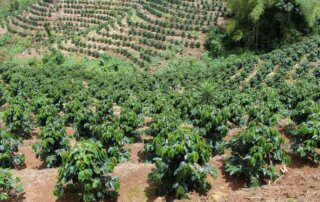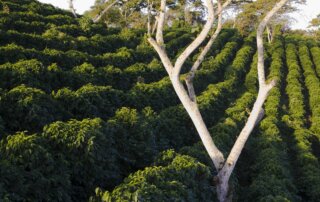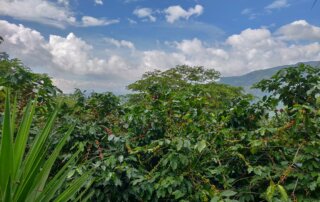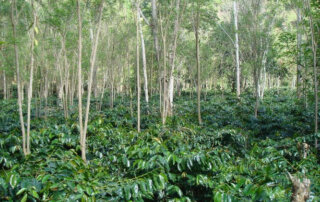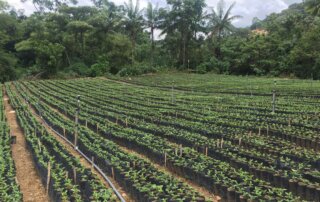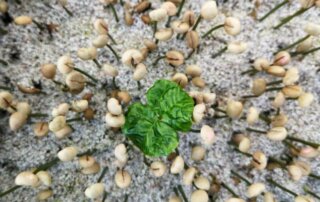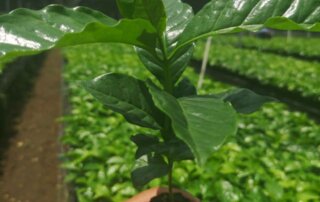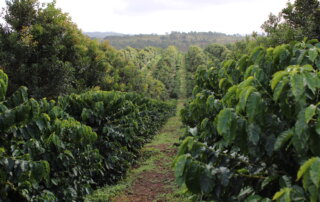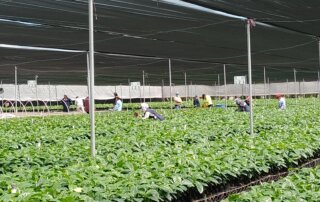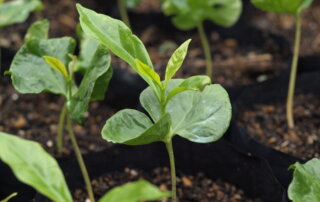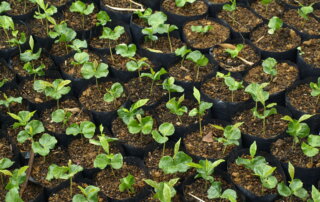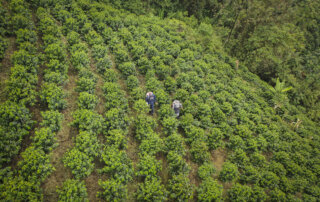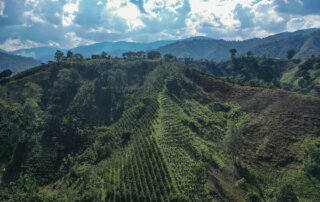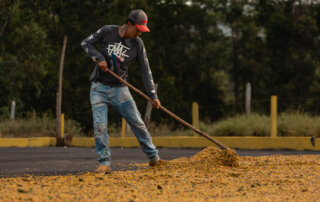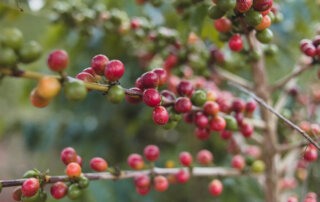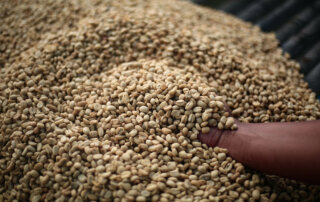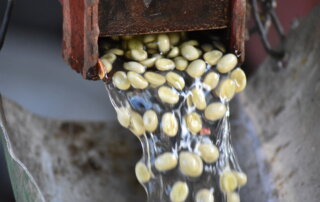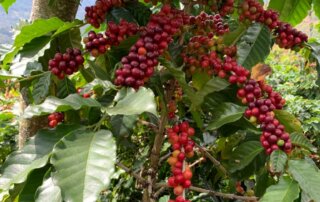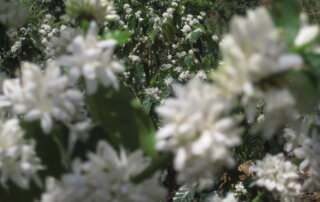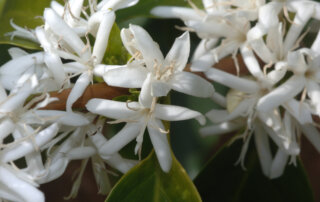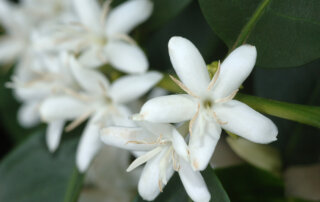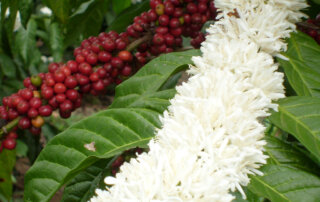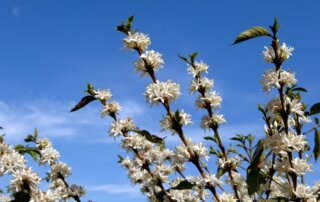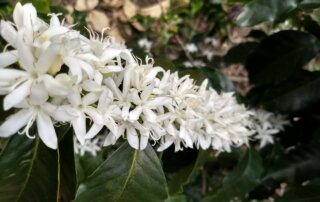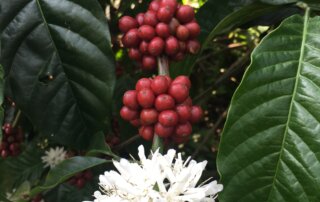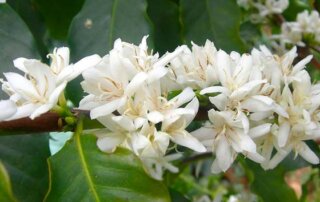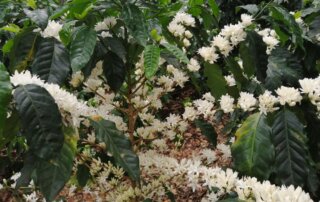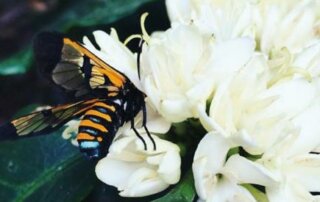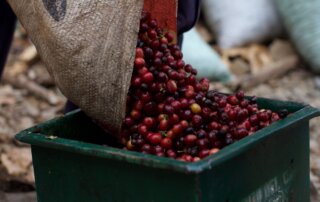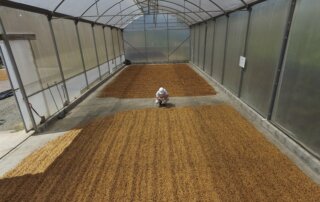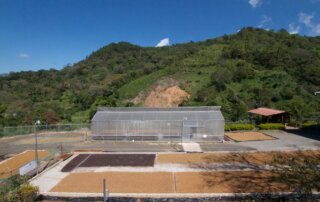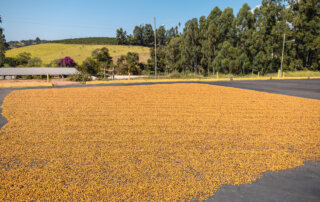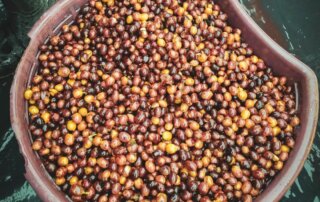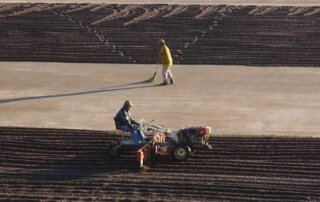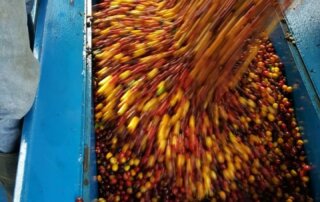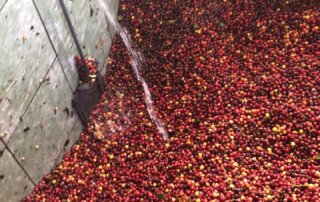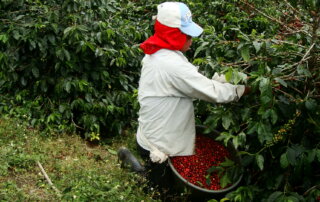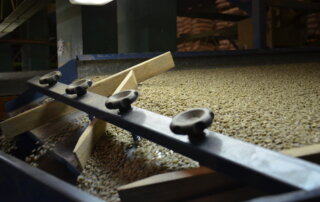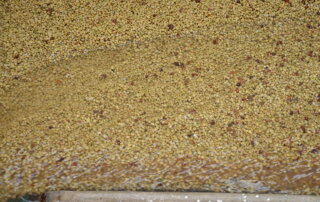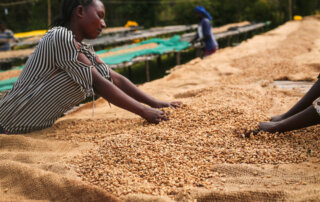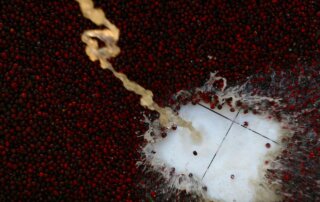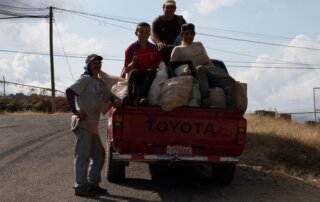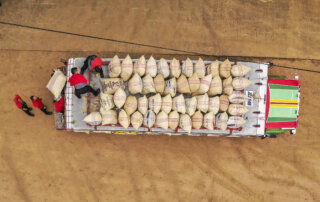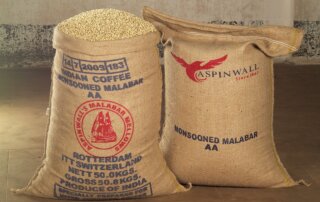All About Coffee
The Coffee Tree
70 countries are coffee growing countries. The taste of a coffee depends strongly on the growing area, the care, the altitude of the area, the climate, the counter, the microclimate, and the soil quality.
Coffee plants can grow up to four metres high. However, they are pruned during cultivation and have a bosky shape. The botanical name for coffee is Coffea. Two Coffea species are economically important: Coffea-Arabica and Coffea-Canephora. Better known to us as Arabica and Robusta. The coffee plant is very sensitive compared to other plants and only grows under certain climatic conditions. For example, coffee is only grown in the countries around the equator. The so-called “coffee belt”.
Coffee plantations place high demands on the location. Strong winds and large temperature fluctuations as well as sun on the soil surface must be avoided, as must cold, dryness or constant wetness. Shade, on the other hand, does not harm the sensitive crop. On the contrary, coffee is often grown between light shade trees of natural forest vegetation or together with other useful plants.
Cultivation & Harvest
Seeds for coffee cultivation are obtained from healthy trees (mother trees) and used for sprouting. The seed is planted in the nursery. Cherry skin and pulp are removed beforehand. The parchment skin remains. After about three months, the seed begins to sprout. It sprouts a taproot, and the “seed” emerges from the soil with the parchment skin. During the next 6 months the seedling grows. After nine months the seedling has grown into a young tree with an average of 12-16 leaves. It is planted out and transplanted, covered with soil. The young tree must grow for the next 3-5 years and be watered daily. Only then will it flower for the first time. A coffee cherry can then ripen from the blossoms. The coffee cherries ripen on the branch and change colour over time, which indicates the degree of ripeness. Each cherry contains an average of two seeds, which after processing become coffee beans that can be roasted. The seeds lie in the cherry with the flat side facing each other. In the more unusual cases, only one seed grows in the cherry and develops into a “pearl bean”. The coffee beans are now either prepared for sale or selected for further cultivation and are planted. The result is the “coffee cycle”
Arabica & Robusta
The coffee plant of the genus “Coffea Arabica” is mainly cultivated in the highlands. As a rule, harvesting is done by hand and care is more complex at higher altitudes. This variety is considered to be very aromatic and can develop very different aromas and characteristics depending on the respective plant variety, the cultivation area, the microclimate prevailing there and the processing methods after harvesting. Temperatures of 15 to 25 degrees are best for Arabica. A rainfall of 1,200 to 2,200 millimetres is ideal here.
The “Coffea Canephora – Robusta” variety, on the other hand, is less demanding. This coffee plant genus does not need a specific cultivation altitude, climate, or extensive care to thrive. The Robusta plant thrives very well in lower growing regions at altitudes of around 200 to 300 metres. Theoretically, it can also be grown at higher altitudes (up to 2,300 metres). But because it also grows well in the lowlands, there is usually no reason for this. It also tolerates humid and warm climates excellently. Temperatures of 24 to 26 degrees are optimal, however. A rainfall of about 2,200 to 3,000 millimetres is considered perfect.
Differences can also be easily observed on the plant.
Robusta plants, for example, can grow up to ten metres high, whereas Arabica plants only grow around six to eight metres. The leaves also differ from each other in terms of colour and shape. The flowers of the Arabica plant usually have five leaves that look more pointed. The coffee cherries are evenly distributed over the entire branch. In the Robusta plant, the flowers are mainly on the leaf axils. The cherries grow close together here.
Especially when both types of beans are compared directly with each other, the differences are recognisable. For example, the bean of the Robusta plant is smaller, rounder and has an almost straight and firm notch on its flat side. It usually has a yellowish to brownish colour.
The bean of the Arabica plant is larger and flatter and more oval. The notch on its flatter side is not straight but has a slight S-shape. Depending on the growing conditions and the origin of the plant, this curved shape is sometimes more and sometimes less clearly recognisable. In addition, it has a greenish, sometimes also bluish colour.
The differences are also clearly visible in the genetic code. While Robusta has only 22 chromosomes, Arabica has 44.
There are also big differences in the caffeine content. The bean of the Arabica plant has a caffeine content of about 1.1 to 1.7 percent, whereas the Robusta bean has between 2 and 4.5 percent. Robusta not only has more caffeine than Arabica, but also more chlorogenic acids – the content is about 30 percent higher.
The two types of coffee also differ in taste. Arabica beans are considered to be more varied, softer, more harmonious, less bitter, mild and overall, significantly more aromatic. Arabica contains many coffee oils and often tastes fruity, sweet, or berry-like. Robustas, on the other hand, have a better body. The beans taste more bitter as well as earthy, rich, and woody. It also develops fewer aromas. However, it impresses with its strong body.
The Flower
The flower of the coffee plant is white, the scent is reminiscent of jasmine and fades quite quickly. The flowering period usually follows the dry season after the first rains. Depending on the variety, the first flowering starts about three to four years after planting. Once the coffee blossom has spread its full splendour, it hardly takes two or three days before the flowers fall to the ground. They leave a small round lump on the plant, called a “carpel”, which grows into a cherry over the next few months.
Seven to nine months after pollination, the fruit then develops. The fruit changes colour from green to yellow and finally to a red during the ripening period, which is how the fruit got its name: Coffee cherry. If the coffee cherry ripens too far, it turns black. Inside the cherry, under different layers (pulp, parchment skin and silverskin), there are usually two seeds – the coffee beans. Enveloped in the silverskin, the green coffee beans are shipped. The pulp and the parchment skin are removed in the country of origin.
The grape varieties (Riesling, Silvaner, etc.) are to coffee what the grape varieties are to wine. The two best known are Arabica and Robusta. However, there are up to sixty types. For coffee consumers, however, only the two mentioned above are important. The others often require more effort to grow and yield much less. Consequently, they are not relevant for the world market.
Processing
Washed
- In tanks, the harvested coffee cherries are examined for unripe and ripe cherries. The ripe cherries sink to the bottom. Unripe cherries float to the top (floaters) and are removed. The process is called fruit swelling.
- De-pulping the beans should be done no more than twelve hours after harvesting. During this process, fruit pulp remains and sticks to the bean.
- The remaining pulp is fermented in fermentation tanks for a maximum of 72 hours, during which time it detaches from the coffee bean.
3.1 The mechanical cleaning of the hulled coffee beans is known as fully washed.
- The remaining pulp particles are washed off in water channels.
- The coffee beans are dried in drying machines or in the sun (sun dried). The beans are still protected in the parchment skin.
Natural
- Cleaning the coffee cherries of impurities such as soil, stones and leaves/branches.
- Dry the coffee cherries on concrete, tables or on the ground. Until the beans have separated from the pulp.
2.1 Constant turning of the beans prevents the still moist coffee cherries from rotting – this can take between two to five weeks.
- Pulping is the process of separating the pulp from the coffee bean.
3.1 The dried pulp is often enjoyed as an infusion or used as animal feed in the growing countries. Here it is known as cascara.
Semi-dry
- Cleaning the coffee cherries from impurities such as earth, stones, and leaves/branches.
- In tanks, the harvested coffee cherries are examined for unripe and ripe cherries. The ripe cherries sink to the bottom. Unripe cherries float to the top (floaters) and are removed. The process is called fruit swelling.
- remove pulp from the beans, leaving pulp residues attached to the bean.
3.1. A distinction is made here between white, yellow, red, and black honeys, depending on the amount of flesh adhering.
- Drying the coffee beans with the pulp residues still moist; regular turning of the sticky coffee beans is very important here, otherwise they will rot.
4.1 The duration of the drying depends on the climate and lasts on average eight days.
- Removal of the dried pulp residues
Trade & Exchange
The price of coffee is determined by the following factors: Quality, supply and demand, seasonal fluctuations, additional costs such as insurance, currency fluctuations, political situation in the country of origin and speculation on the stock exchange. Arabica beans are mainly traded on the New York Stock Exchange and Robusta coffees on the London Stock Exchange. The reason for the price fluctuations on the coffee exchange are the so-called commodity futures. This means that the goods are bought months in advance. However, the prices in a commodity futures transaction can only be defined for standard quality grades (specified by the exchange) of coffee. Deviations in quality are then negotiated by the buyer and supplier (are written in the respective contracts between trader and buyer).

